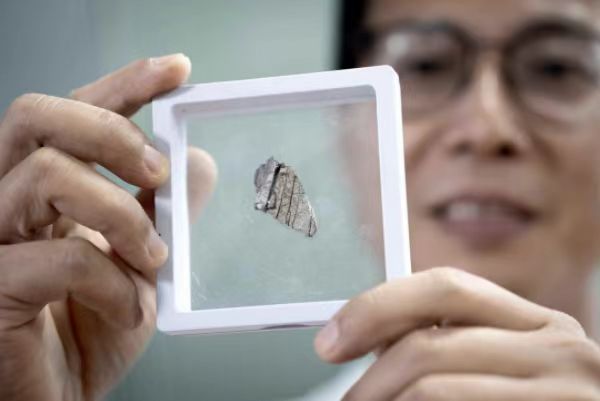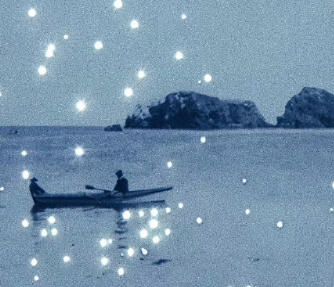Hubble spots a roaming black hole light
A black holeskulking in the shadows 600 million light-yearsaway in spacegave itself away with a dazzling flash,关键字2 the light of a star it had just gnashed and eaten.
Using NASA's Hubble Space Telescope and other observatories, astronomers found the cosmic object in an unexpected place. Rather than sitting dead center in its galaxy like most supermassive black holes, this one was thousands of light-years away from the core — 2,600, in fact.
What's more, there is another enormous black hole that is the actual nucleus. While the catawampus black hole has the mass of 1 million suns, the one that defines the galactic center is 100 million times the mass of the sun.
You May Also Like
The burst of radiation detected, known as a tidal disruption eventor TDE, began when a star wandered too close to the black hole. If not for that stellar snack, the black hole would have escaped astronomers' notice.
"It opens up the entire possibility of uncovering this elusive population of wandering black holes with future sky surveys," said study author Yuhan Yao of UC Berkeley in a statement. "I think this discovery will motivate scientists to look for more examples of this type of event."
SEE ALSO: Soviets were headed to Venus in 1972. The spacecraft is about to return. The Hubble Space Telescope, a partnership of NASA and the European Space Agency, confirms the presence of a wandering supermassive black hole, 600 million light-years from Earth. Credit: NASA
The Hubble Space Telescope, a partnership of NASA and the European Space Agency, confirms the presence of a wandering supermassive black hole, 600 million light-years from Earth. Credit: NASA Out of about 100 TDE events discovered through surveys so far, this one, dubbed AT2024tvd, is the first scientists have seen emerging from a supermassive black hole that is not a galactic nucleus. The research team's findings, announced by NASA, will be published in an upcoming issue of The Astrophysical Journal Letters.
Black holes are some of the most inscrutable phenomena in outer space. About 50 years ago, they were little more than a theory— a kooky mathematical answer to a physics problem. Even astronomers at the top of their field weren't entirely convinced they existed. Today, not only are black holes accepted science, they're getting their pictures takenby a collection of enormous, synced-up radio dishes on Earth.
Unlike a planet or star, black holes don't have surfaces. Instead, they have a boundary called an "event horizon," or a point of no return. If anything swoops too close, like the doomed aforementioned star, it will fall in, never to escape the hole's gravitational clutch.
The most common kind, called a stellar black hole, is thought to be the result of an enormous star dying in a supernova explosion. The star's material then collapses onto itself, condensing into a relatively tiny area.
How supermassive black holes form is even more elusive. Astrophysicists believe these invisible giants lurk in the heart of virtually all galaxies. Recent Hubble observations have bolstered the theorythat they begin in the dusty cores of starburst galaxies, where new stars are rapidly assembled, but scientists are still teasing that out.
 A supermassive black hole is off-center in a galaxy 600 million light-years from Earth. Credit: NASA / ESA / STScI / Ralf Crawford illustration
A supermassive black hole is off-center in a galaxy 600 million light-years from Earth. Credit: NASA / ESA / STScI / Ralf Crawford illustration As the star was stretched and torn asunder in the TDE, some of its gas formed a glowing ring around the black hole. The resulting flareflashed brightly in ultraviolet and visible light.
Related Stories
- Webb telescope may have just revealed a spiral galaxy's startling secret
- Hubble captures a stunning cradle of stars in neighboring galaxy
- The best telescopes for gazing at stars and solar eclipses in 2024
- Astronomers wonder if galaxies are falling into this giant black hole
- He found a Milky Way black hole 50 years ago, and finally got to see it
Telescopes on the ground, such as the Zwicky Transient Facility in California, first detected it. But it was Hubble that confirmed the flare's off-center location. NASA’s Chandra X-ray Observatoryin space and the Very Large Arrayin New Mexico provided supporting data.
The two supermassive black holes both reside in the same galaxy, yet they are not a binary pair, meaning they're not bound to each other through gravity. Scientists don't know how the wandering black hole got there.
 A star's remnants form a disk around a hidden supermassive black hole. Credit: NASA / ESA / STScI / Ralf Crawford illustration
A star's remnants form a disk around a hidden supermassive black hole. Credit: NASA / ESA / STScI / Ralf Crawford illustration One possibility is that the smaller black hole came from a smaller galaxy that at some point merged with the larger one, bringing its central black hole along for the ride. Eventually, the smaller black hole may spiral into the larger one. For now, it's doing its own thing.
Another possibility is that it was ganged up on by a couple of bully black holes. In so-called three-body interactions, the lowest-mass object can be evicted from the center of a galaxy, with the two others remaining in the galaxy's core.
"Theorists have predicted that a population of massive black holes located away from the centers of galaxies must exist," said Ryan Chornock, a member of the ZTF team, in a statement, "but now we can use TDEs to find them.”
(责任编辑:我们都要好好的)
-
 作为一名辛苦耕耘的教育工作者,常常要写一份优秀的教学设计,编写教学设计有利于我们科学、合理地支配课堂时间。下面是小编为大家收集关于化学元素教案范文,希望你喜欢。化学元素教案范文精选篇1教学目标【教学目
...[详细]
作为一名辛苦耕耘的教育工作者,常常要写一份优秀的教学设计,编写教学设计有利于我们科学、合理地支配课堂时间。下面是小编为大家收集关于化学元素教案范文,希望你喜欢。化学元素教案范文精选篇1教学目标【教学目
...[详细]
-
 快手aauto quicker常见问题及如何解决当我们遇到问题是可以打开快手帮助文档,步骤如下图:1/2在我的电脑上无法阅读CHM电子书怎么办当您用鼠标双击下载的CHM文件时,在弹出的安全警告对话框上
...[详细]
快手aauto quicker常见问题及如何解决当我们遇到问题是可以打开快手帮助文档,步骤如下图:1/2在我的电脑上无法阅读CHM电子书怎么办当您用鼠标双击下载的CHM文件时,在弹出的安全警告对话框上
...[详细]
-
สภาพอากาศกรุงเทพฯ เที่ยงนี้ ไม่มีกลุ่มฝน อุณหภูมิ 32 องศาฯ
 ศูนย์ป้องกันน้ำท่วม กรุงเทพมหานคร รายงานสภาพอากาศกรุงเทพมหานคร วันที่ 11 มิถุนายน 2568 เวลา 12.00 น.
...[详细]
ศูนย์ป้องกันน้ำท่วม กรุงเทพมหานคร รายงานสภาพอากาศกรุงเทพมหานคร วันที่ 11 มิถุนายน 2568 เวลา 12.00 น.
...[详细]
-
粤游粤好“运”丨解锁山海新玩法!16条美丽广东生态文旅线路出炉,附攻略→
 为充分展现美丽广东建设成效,积极推进“无废全运”“美丽全运”工作,广东以“观全运赛事、看美丽广东”为主题,以16个赛事举办城市美丽资源为基础,发布美丽广东生态文旅线路首批16条),持续擦亮生态人文广式
...[详细]
为充分展现美丽广东建设成效,积极推进“无废全运”“美丽全运”工作,广东以“观全运赛事、看美丽广东”为主题,以16个赛事举办城市美丽资源为基础,发布美丽广东生态文旅线路首批16条),持续擦亮生态人文广式
...[详细]
-
 2023年四川乐山中考作文题目阅读下面的材料,根据要求写作。(60分)《昆明的雨》描绘出一个“明亮的、丰满的、使人动情的”雨季,作者汪曾祺说:“我想把生活中真实的东西、美好的东西、人的美、人的诗意告诉
...[详细]
2023年四川乐山中考作文题目阅读下面的材料,根据要求写作。(60分)《昆明的雨》描绘出一个“明亮的、丰满的、使人动情的”雨季,作者汪曾祺说:“我想把生活中真实的东西、美好的东西、人的美、人的诗意告诉
...[详细]
-
Watch the moment SpaceX Starship crushed a major milestone in latest test
 Many reports following SpaceX’s ninth flight test for Starshipon Tuesday emphasized disaster:
...[详细]
Many reports following SpaceX’s ninth flight test for Starshipon Tuesday emphasized disaster:
...[详细]
-
โฆษก รทสช. มั่นใจพรรคยังไม่แตก ไม่ซ้ำรอยพปชร. เชื่อ "สุชาติ
ข่าวทั่วไป12:19น.2025-06-11Facebook iconFacebookTwitter iconTwitterLINE iconLineนายอัครเดช วงษ์พิทัก ...[详细]
-
 【独家签约小说:大秦:儿子对比,嬴政酸了】秦王政二十六年,天下刚刚一统,平行世界对比天幕降临,展现两个扶苏截然不同的一生。嬴政看着天幕上那个功绩远迈自己,得千秋传唱、万代铭记,被赞誉为万古一太宗的扶苏
...[详细]
【独家签约小说:大秦:儿子对比,嬴政酸了】秦王政二十六年,天下刚刚一统,平行世界对比天幕降临,展现两个扶苏截然不同的一生。嬴政看着天幕上那个功绩远迈自己,得千秋传唱、万代铭记,被赞誉为万古一太宗的扶苏
...[详细]
-
 作为一名优秀的人民教师,我们的工作之一就是课堂教学,下面是小编为大家收集关于初中生物病毒教案教学设计,希望你喜欢。初中生物病毒教案教学设计篇1)一、学习目标1.知识目标:识别病毒,说出病毒的结构组成及
...[详细]
作为一名优秀的人民教师,我们的工作之一就是课堂教学,下面是小编为大家收集关于初中生物病毒教案教学设计,希望你喜欢。初中生物病毒教案教学设计篇1)一、学习目标1.知识目标:识别病毒,说出病毒的结构组成及
...[详细]
-
 竞彩大势北京时间06月10日周二),今日竞彩一共开售16场比赛,下午场有世预赛的赛事,晚上主要有世欧预和世南美预的比赛,比较焦点的赛事为中国VS巴林、阿根廷VS哥伦比亚和巴西VS巴拉圭,今天的比赛场次
...[详细]
竞彩大势北京时间06月10日周二),今日竞彩一共开售16场比赛,下午场有世预赛的赛事,晚上主要有世欧预和世南美预的比赛,比较焦点的赛事为中国VS巴林、阿根廷VS哥伦比亚和巴西VS巴拉圭,今天的比赛场次
...[详细]

 中国最南端的暴龙类有新发现
中国最南端的暴龙类有新发现 杭州市余杭区智慧环卫监管平台正式投入运行
杭州市余杭区智慧环卫监管平台正式投入运行 悟性逆天,桃花岛化龙,震惊黄蓉
悟性逆天,桃花岛化龙,震惊黄蓉 暗区突围端游今日正式上线
暗区突围端游今日正式上线 偷偷给心里遗憾过那个人留的一句话 看完瞬间破防的文案
偷偷给心里遗憾过那个人留的一句话 看完瞬间破防的文案
